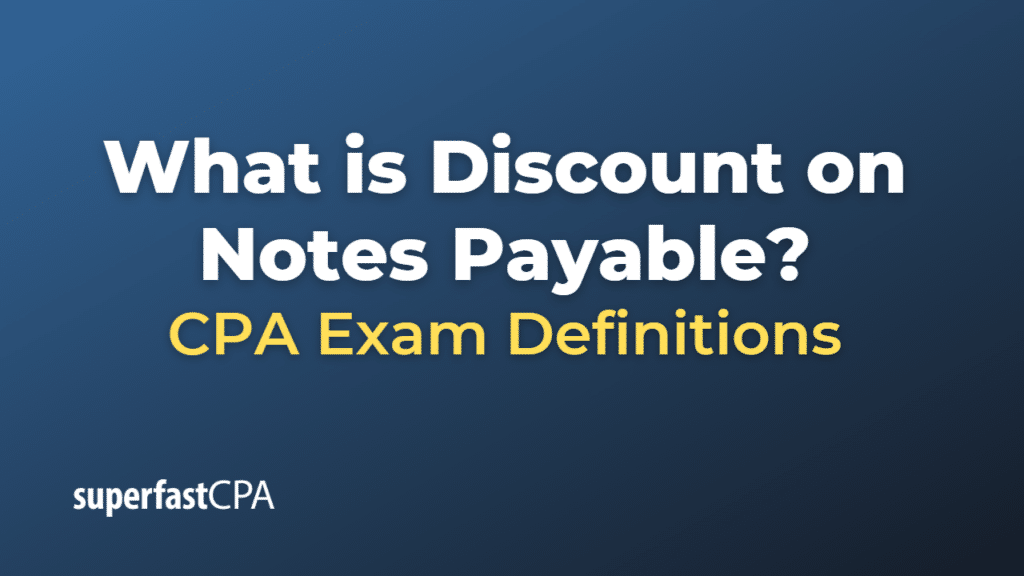Discount on Notes Payable
“Discount on Notes Payable” is a concept similar to “Discount on Bonds Payable,” except it relates to promissory notes instead of bonds. A promissory note is a financial instrument in which one party (the issuer or maker of the note) promises in writing to pay a determinate sum of money to the other party (the payee) either at a fixed or determinable future time or on demand of the payee.
If a note is issued for less than its face value, the difference is recorded as a “Discount on Notes Payable”. This is a contra liability account, meaning it reduces the balance of the Notes Payable account when both are presented together on the balance sheet.
For instance, if a company issues a $10,000 note and receives only $9,000 in cash, the company would record a $1,000 Discount on Notes Payable. This discount is then amortized over the life of the note, typically using the effective interest method or the straight-line method. As the discount is amortized, it increases the interest expense recorded by the company, effectively raising the cost of borrowing to the market rate.
Here’s an example of the journal entries at the issuance of the note:
- Debit Cash $9,000
- Debit Discount on Notes Payable $1,000
- Credit Notes Payable $10,000
Over time, the discount would be gradually amortized to Interest Expense, thereby reducing the balance of Discount on Notes Payable and increasing the carrying value of the note.
Example of Discount on Notes Payable
Let’s consider a specific example:
Suppose XYZ Company issues a 1-year, $20,000 promissory note to a lender, but because the interest rate stated on the note is lower than the market rate, the lender only provides XYZ with $19,000 in cash. The $1,000 difference is the discount.
Here’s how XYZ would record the issuance of the note:
- Debit Cash for $19,000 (the cash received)
- Debit Discount on Notes Payable for $1,000 (the discount)
- Credit Notes Payable for $20,000 (the liability)
Over the life of the note, the $1,000 discount is amortized, which increases the interest expense recorded by XYZ Company.
Let’s say the discount is amortized evenly over the 12 months of the note’s term (this is a simplified approach known as straight-line amortization; in practice, the effective interest method is often used). Each month, XYZ would make the following entry:
- Debit Discount on Notes Payable for $83.33 ($1,000 discount ÷ 12 months)
- Credit Interest Expense for $83.33
By the end of the note’s term, the entire $1,000 discount has been amortized, so the Discount on Notes Payable account balance is $0, and the carrying value of the note (Notes Payable minus Discount on Notes Payable) is $20,000, which is the amount XYZ must repay to the lender. The extra $1,000 that XYZ has recognized as interest expense over the term of the note effectively brings the cost of borrowing up to the market rate.
This example illustrates how a note issued at a discount is recorded and how the discount is amortized over the life of the note.













